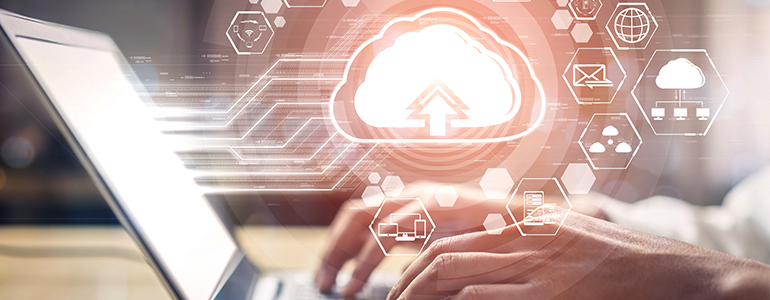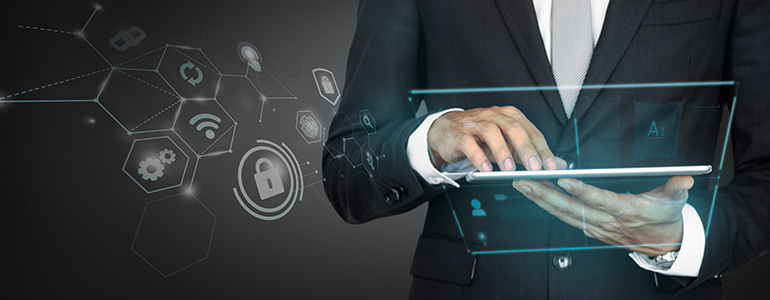What is Employee Self Service and its importance?
What is Employee Self Service or ESS?
Employee self-service is just as it sounds, it’s a modern concept in human resource management, where your employees have greater control over basic HR administrative tasks that pertain to managing their own selves. In simple words, ESS allows your employees to be their own HR. And being their own HR is easy for employees when the HRMS that your company uses supports ESS workflows!
Back in the day, human resource management systems were solely made for your HR departments to access. Every important action with regards to tracking your employees and their basic allowances like leaves and time-offs were tracked by HRs using an HRMS. However, as modern HRs took on additional responsibilities, the job of micromanaging every employee and their basic allowances quickly overwhelmed HR departments the world over. Especially when the number of employees numbered in the multi-thousands. The error rates increased, employees were disgruntled, and HRs felt underpowered and overworked.
This is where modern HRMS platforms started introducing the ESS feature, which basically allows employees to manage their basic allowances like applying for leaves, tracking their attendance, downloading payslips, and even understanding their compensation structure for the month without asking the already overwhelmed HR department.
Employee self-service (ESS) is a widely used human resources technology that allows employees to perform any job-related functions that were previously largely paper-based or would have been maintained by management or administrative staff, such as applying for reimbursement, updating personal information, and accessing company benefits information. Employee self-service is frequently accessible via the company's Intranet or portal. It can also be a component of bigger human capital management (HCM), enterprise resource planning (ERP), or benefits administration software, which is frequently offered as a service (SaaS).
Employee self-service software, which was originally offered as a standalone product, is now frequently integrated into larger HR technology systems. The abbreviation ESS isn't as extensively used now as it was when the technology was originally introduced in the early 2000s. In most large HCM systems, self-service functions are now considered standard functionality.
Employee self-service technology helps to establish a pleasant work culture and retain talent in an increasingly competitive employee talent market by offering workers direct control over their employment information. Employee self-service systems are increasingly being optimised for mobile on social media-type platforms, and they're typically part of bigger employee engagement plans that include things like wellness programmes, recognition, learning management systems, and company-wide social events.
Employee self-service solutions can help HR administrators save time while providing employees more control over their benefits and payroll settings. They can also assist employees in feeling more connected to their businesses, as well as happier and more productive in their employment.
Because of the various data formats and login methods, integrating numerous employee self-service channels such as an intranet, portal, wellness programme applications, and retirement accounts can be technologically challenging. It can also take a long time to educate staff on the potential of self-service systems and encourage them to utilise them.
Furthermore, upgrading from legacy self-service systems to new ones can necessitate difficult vendor decisions, such as whether systems from different vendors are compatible or whether a standalone self-service system should be replaced with a specialised module from an HCM, ERP, or benefits software vendor.

The Beauty of Employee Self Service
HRs have a lot going on, from processing payroll to setting up interviews and a few other things in between, it’s quite a day in the shoes of a modern HR. A modern HRMS with an ESS feature simply takes the burden of repetitive work away from the HR department and places it into the hands of your employees, who are in a better position to manage their basic allowances.
Employees can modify personal information such as their address, contact information, and banking information in most employee self-service systems, however, clearance may be required. Employees can also examine scheduling and payroll information in some ESS systems. Even the most basic self-service systems allow employees to seek time off and have their requests approved by their superiors.
Some HRIS allows workers to connect electronically with the human resources department if there are any concerns that they are not permitted to change directly via ESS. Employees may submit messages outside of usual business hours, which saves time and effort for both employees and HR experts.
Some businesses see value in utilising ESS to allow employees to make adjustments for the sake of information during open enrollment or when life events occur. Many employees like this strategy since it allows them to have complete control over their data. This strategy also gives you more time to investigate other benefit possibilities without the time constraints that come with dealing with HR personnel.
Open enrollment self-service alternatives are popular among HR professionals, managers, and businesses. All parties save time at work, and the disruption that open enrollment causes many businesses is avoided. Due to the interactive nature of the HRIS and the insurance provider, the application procedure may be simplified and the information given may be more detailed.
Employee self-service may assist large organisations in almost every sector. ESS may also assist small and medium businesses in specific industries. Companies should assess the advantages and downsides and perform both internal and external research before investing in software to offer self-service alternatives.
HRIS may alter a company's HR system, but it takes collaboration between human resources managers and managers of other departments to make employee use as frequent and extensive as feasible. Employees should be taught how to utilise the system as part of their regular on-the-job training. Prior to the end of the project, managers should ensure that workers are as comfortable with the self-service HRIS as they are with any other component of the job.
When ESS has been successfully implemented, a company may see immediate increases in productivity and efficiency. Managers and human resources personnel may save labor hours and frustration on a daily basis when not faced with working through scheduling issues, time-off requests, and open enrollment questions. Employees may be able to access scheduling and other information from home, which saves employees time and can boost feelings of empowerment.
Allowing staff to submit their own data can also help to avoid entry errors and other problems. Entry mistakes may be avoided as early as the application process if recruitment and onboarding are available through the HRIS and immediately tie into the self-service portal. The likelihood of erroneous information may be considerably reduced by eliminating the necessity for double entry and allowing staff to review their own data.
Employees are no longer satisfied with having a "middle man" advocate on their behalf. However, when businesses develop, it can be difficult for each employee's opinion to be heard. Employees may now speak directly to appropriate departments via self-service HRIS, allowing organisations to better fulfil employee expectations.
Previously, all HR data had to be entered into the system by someone who had been specially trained to do so. Payroll information was frequently handled by another department or potentially a third party, while other revenue data was handled by still another department or institution. By connecting these systems and making the information available to people who need it, self-service HRIS is helping to simplify all of these procedures.
A self-service portal also has the advantage of being cloud-based. Employees may use the portal from any location, whether at home, on a mobile device, or in another office building. There's no need to wait until the next time they visit the main office to access the self-service site. Furthermore, your staff has 24/7 access to their data. They don't have to wait for business hours or for a member of your HR department to become available. Employees can obtain answers to their inquiries or update their information as needed.
Self-service HRIS not only makes data entry and transmission faster and more efficient, but it also helps to reduce mistakes. When data is input manually, human error has always been a big problem. Self-service HRIS almost eliminates data transfer mistakes and makes it much easier for human resources managers to discover problems in newly entered employee or application information. With the inclusion of a self-service HRIS, the functionality of human resources departments may be considerably improved. HR managers may devote all of their attention to situations that demand a human touch. HR managers' time is no longer consumed by data entry or answering simple employee questions.
Making some HR procedures self-service has a significant benefit in terms of reducing the strain of your HR team. Because HR departments are often overburdened, anything that workers can do for themselves is really beneficial. Employees may access their own schedules, check payroll, clock in and out, amend timesheets, update benefits, change personal information, and more through self-service portals.
All of these would require employees to contact your HR department if you didn't have an HRIS. These are routine chores that would quickly consume a lot of HR time, especially if the company has a large number of employees. This will free up a significant amount of time for your HR team to focus on the wider picture and more critical responsibilities.
What Does an HRMS With a Good ESS Feature Do?
An HRMS with a good ESS feature allows your employees to easily manage their own basic needs at the click of a button and remotely. Every employee is responsible to ensure their own well-being and a good ESS feature only promotes this.
Employees can view and edit their own personal information using the HRIS system. Employee happiness and engagement increase when they have direct access to and control over their information. They will also be able to access information regarding training and progression prospects, giving them more influence over their careers. Employees that are more engaged are more productive and loyal to their employers. Many people may look for ways to develop their talents and themselves, making them more valuable workers and lowering turnover.
Data has gotten easier to audit since data input has become easier and HR services have become more efficient. This has increased data integrity and ensured that corporate rules and current regulations are followed. Access to a cloud-based database of all HR-related documents is also available through self-service portals. Training materials, HR rules, and other items fall under this category.
Employees may get them at any time, from anywhere, whenever they need them. If an employee is out of the office but needs further information on the company's travel policy and reimbursement, they can do it without having to contact HR. The database can also include the various benefits alternatives so that employees can compare different benefit plans before open enrollment.
Employee autonomy may be increased through self-service portals, which empower individuals while also saving managers and HR professionals time. Self-service alternatives may take some time to set up, but the effort may be worthwhile if it improves system engagement and streamlines how your team interacts. Some HRIS software allows you to build up self-service portals for onboarding.
Self-service will become ingrained in the minds of new workers if it is introduced at this early stage, especially if they are required to utilise the software for more tasks soon after onboarding. Allowing employees to use this option to acclimatise to the organisation encourages them to take ownership of their own careers inside the company and aids user adoption.
When HRIS self-service is mentioned, most people think of it as a tool that workers can use. Employee self-service receives the majority of the focus since it takes time to train employees and can result in significant changes. Manager self-service, on the other hand, is available everywhere employee self-service is, and if leveraged to its full potential, it may significantly increase organisational performance. Managers may utilise HRIS self-service in the following ways to enhance the firm and make their work simpler.

Here’s What Employees Can Do with an ESS Feature:
Manage Their Own Profiles
Employees can view and manage their own profiles like update their address, contact information, banking details, and so forth. This feature works well for HRs looking to keep a track of employees, and it allows your employees to ensure that the HR department is informed and avoid errors in payroll processing and more.
Manage and View Important Documents
A good ESS feature allows storage and access to documents virtually. Employees and the HR team can store all the relevant documents on the cloud-based storage system. These documents can be accessed anytime using the web portal.
Create To-Do Lists
Remember when employees commonly had ‘post-it stickers’ placed all around their workbench, stuck to the walls and their desks? Well, a good ESS feature allows employees to create their own to-do lists and also receive electronic reminders. Think of it as your employees’ electronic diary!
Understand Organisations Structures
A good employee self-service feature also allows employees and HR teams to view the organisational structure in order to determine who their reporting manager and seniors are with regard to the tasks they are allotted. It presents employees with a clearer picture of the organisation, including their designation and the department they belong to. HR teams use this to plan business strategies and align resources.
Stay Updated on Official Events
Another aspect of employee self-service is to stay updated on all the happenings at the workplace without the need for someone to assist you. For example, when your HRMS supports a central noticeboard where your company’s latest updates are posted, it allows your employees to easily access this information without the need for the HR department to send bulk emails.
Manage their Work Calendar
ESS features eliminate the need for employees to constantly check with the HRs about upcoming holidays and more. A central calendar with all official holidays works as a great tool for employees to keep themselves updated.
Receive Personalised Notifications
Finally, a good ESS feature allows employees to set up notifications in a way that is personalised to them.
Does Your Organisation Need ESS Abilities?
Well, you may think that ESS is a feature that works great for organisation with many employees and that your company may not need it because the headcount at your workplace ranges in the hundreds and not thousands. Well, headcount does not really matter, ESS should be a standard feature presented to all employees in order to accurately track and manage basic allowances and to reduce the unrequired stress that micromanagement places on HRs.

Benefits of ESS For Employees
Employees are often disgruntled by HRs who mistakenly process payroll based on incorrect calculations, for example, incorrectly determining the leaves taken or the time spent off. ESS allows employees to take such matters into their own hands and eliminate the possibility of errors.
For HRs
Micromanaging employees who number in the hundreds and sometimes in the thousands is not easy. And the repetitive nature of this work is what leads to errors in calculations. ESS takes some of this burden off your HR’s shoulder and places it in the hands of your employees. It’s a win-win situation.
Accessibility
Finally, a modern could-hosted human resource management system that supports ESS also presents both HRs and employees with the ability to access the HRMS remotely. This is one of the biggest advantages presented to HRs and employees both.

What are Some Basic ESS Abilities to Look For?
A good HRMS with an ESS feature allows your employees to do the following with great ease:
- Manage leaves
- Calculate hours
- Determine pay rates
- Performance appraisals
- Information about HR inquiries or reports
- Raise request
- Update personal data
Things to Keep in Mind When Deploying ESS Abilities
Like every new process, it is important to ensure that your employees understand what ESS truly is and how to use the feature on your HRMS. Training is key here. Since an ESS feature encompasses multiple actions, it’s important for your HR team to take the time to train every new employee on how to correctly use the ESS feature in order to derive maximum benefits.
Here is a tip: The best way to train your new employees on how to correctly use the ESS feature is by hosting the training on your HRMS itself!
If your HRMS is unable to host training or if you’re wondering how this is possible, click on this link to know more. Hoshi HRMS also supports ESS. Reach out to us to find out more.
Hoshi by Neural IT is a cloud-based software helping simplify daily HR tasks. Digitise your HR function & let Hoshi empower HRs to easily onboard new hires, track employee progress, and analyse data to support employee development and organisation.
Share on:

